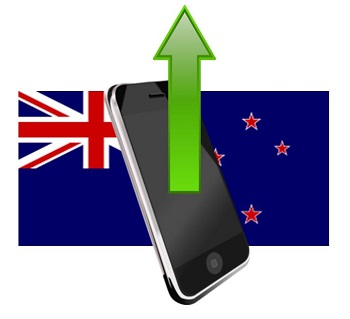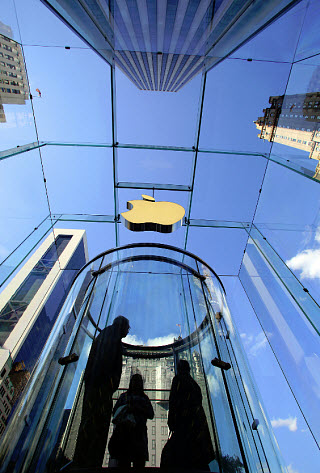The country has been making global headlines due to the increases that it has been seeing in its smartphone ad spend.
Despite the fact that New Zealand is a relatively small country and a limited market when compared to some of the other giant nations and populations, it is now at the top of mobile advertising headlines due to the massive growth that it has seen in its usage and spending.
This has occurred as a result of the latest figures that were released by InMobi in its annual report.
The Mobile Insights Report has now been released by InMobi and has placed the spotlight on New Zealand due to the tremendous growth that the country is experiencing in mobile advertising. The report showed that there were 4.4 billion ad impressions served on the country’s network, last year. When taking into consideration that there is a population of only 4.4 million people in the country, the smartphone based ad stats are very striking.
The report showed that the year before, there had already been 3.3 billion mobile advertising impressions.
 The InMobi report also showed that the company’s analysis showed that the in-app advertising in New Zealand experienced a growth of 45 percent in 2014 over what it had been the year before. In fact, those ads made up 71.7 percent of all impressions.
The InMobi report also showed that the company’s analysis showed that the in-app advertising in New Zealand experienced a growth of 45 percent in 2014 over what it had been the year before. In fact, those ads made up 71.7 percent of all impressions.
According to the InMobi Australia and New Zealand regional director and general manager, Jon White, “This significant growth on our network is further indication of the rapid shift in consumer behavior in New Zealand, reflecting both an increase in audience size, as well as an increase in activity.”
White then went on to say that while they now anticipate growth figures for mobile advertising to be large on their network, the statistics that were actually revealed within their analysis suggest that mobile ad use is “certainly still in a strong growth phase within the country.” He also pointed out that this represents a vital shift in the behavior of consumers and that marketers should be aware of it in order to be able to act on it appropriately.
The Apple Store will not be selling these smartwatches directly to consumers, as many had expected.
An official announcement was recently made that revealed that people who had been hoping to make a direct purchase of the Apple Watch may be disappointed as the company will be using a reservation system instead of sending it out to the retail store shelves.
The smartwatches will not be making their way to the shelves of the Apple Store to be picked up by consumers.
Instead, the only thing that will be possible for consumers to make in-store will be to make reservations for the Apple Watch devices that they want. This will involve a unique reservation system that will open up on April 10. It will make it possible for customers to reserve the model that they want and then pick up the smartwatch device at the Apple Store of their choice once it becomes available on April 24.
The reservations for the Apple Watch need to be made with a representative of the company’s retail stores.
 Making the appointment gives consumers the opportunity to try out the smartwatch for themselves before they make the reservations to actually purchase one. While this may lead to disappointment for those who had hoped to make their purchase within the actual retail stores, the hope is that they will feel more confident in selecting the model that they want when they reserve it online, particularly after trying it out with a store rep.
Making the appointment gives consumers the opportunity to try out the smartwatch for themselves before they make the reservations to actually purchase one. While this may lead to disappointment for those who had hoped to make their purchase within the actual retail stores, the hope is that they will feel more confident in selecting the model that they want when they reserve it online, particularly after trying it out with a store rep.
Apple has made this decision to be able to ensure that they will have enough stock of the models that the customers want, when they begin their shipments. This way, shoppers won’t end up having to face letdowns when the model that they want goes out of stock in the retail stores where they want to buy them.
The Apple Watch reservation system will provide the company with the reaction time that is needed to ensure that it will be able to keep all of the stock dispatch issues sorted out. The pre-orders for the smartwatches will begin in the United States, as well as Canada, the United Kingdom, France, Germany, Australia, Hong Kong, and Japan.
 The InMobi report also showed that the company’s analysis showed that the in-app advertising in New Zealand experienced a growth of 45 percent in 2014 over what it had been the year before. In fact, those ads made up 71.7 percent of all impressions.
The InMobi report also showed that the company’s analysis showed that the in-app advertising in New Zealand experienced a growth of 45 percent in 2014 over what it had been the year before. In fact, those ads made up 71.7 percent of all impressions.
 Making the appointment gives consumers the opportunity to try out the smartwatch for themselves before they make the reservations to actually purchase one. While this may lead to disappointment for those who had hoped to make their purchase within the actual retail stores, the hope is that they will feel more confident in selecting the model that they want when they reserve it online, particularly after trying it out with a store rep.
Making the appointment gives consumers the opportunity to try out the smartwatch for themselves before they make the reservations to actually purchase one. While this may lead to disappointment for those who had hoped to make their purchase within the actual retail stores, the hope is that they will feel more confident in selecting the model that they want when they reserve it online, particularly after trying it out with a store rep.